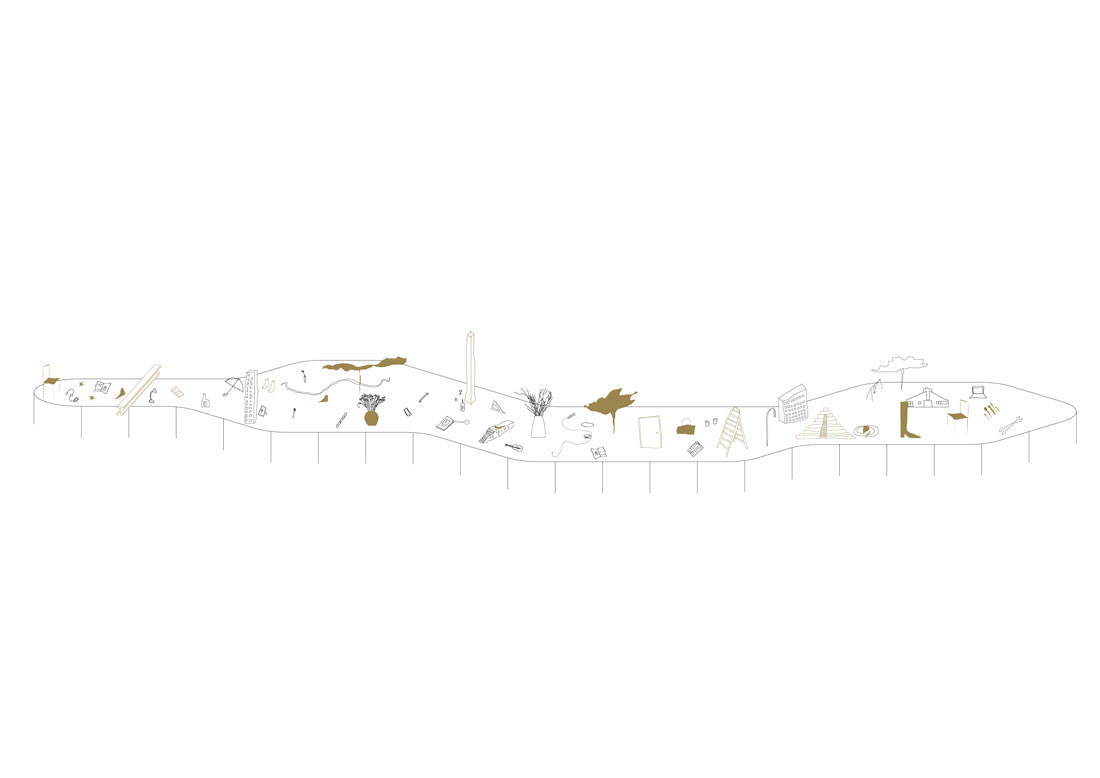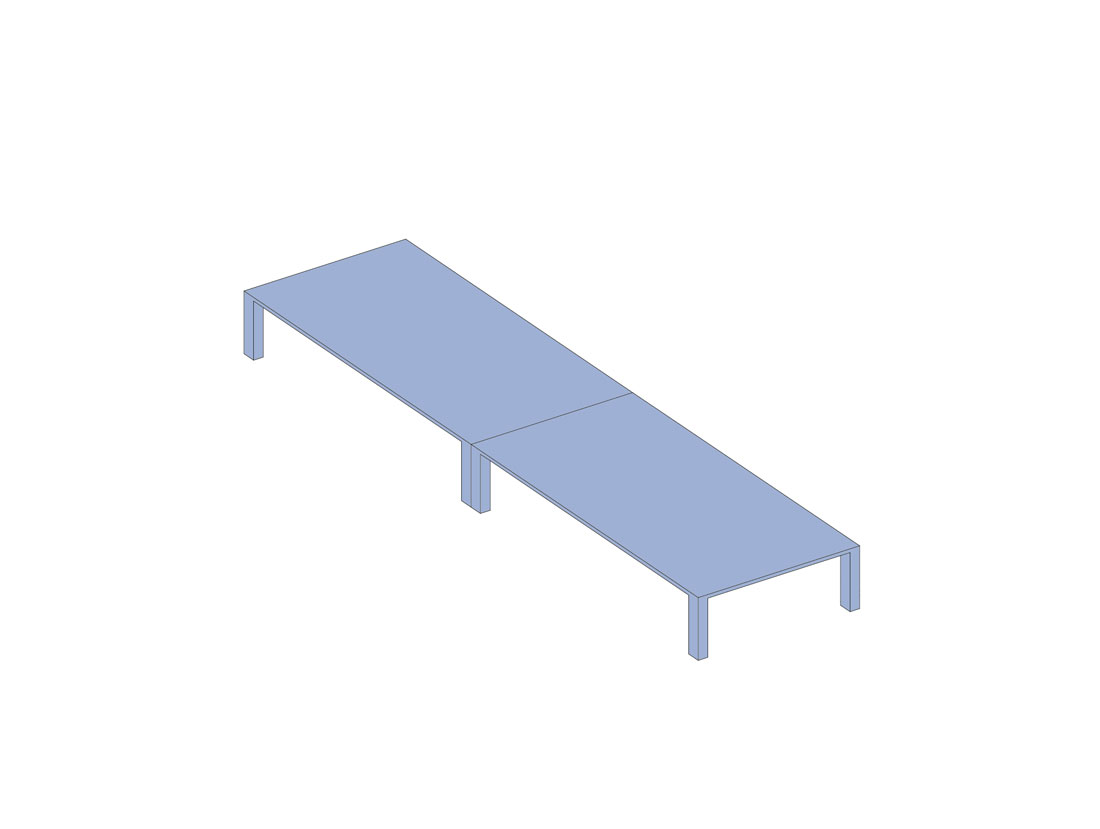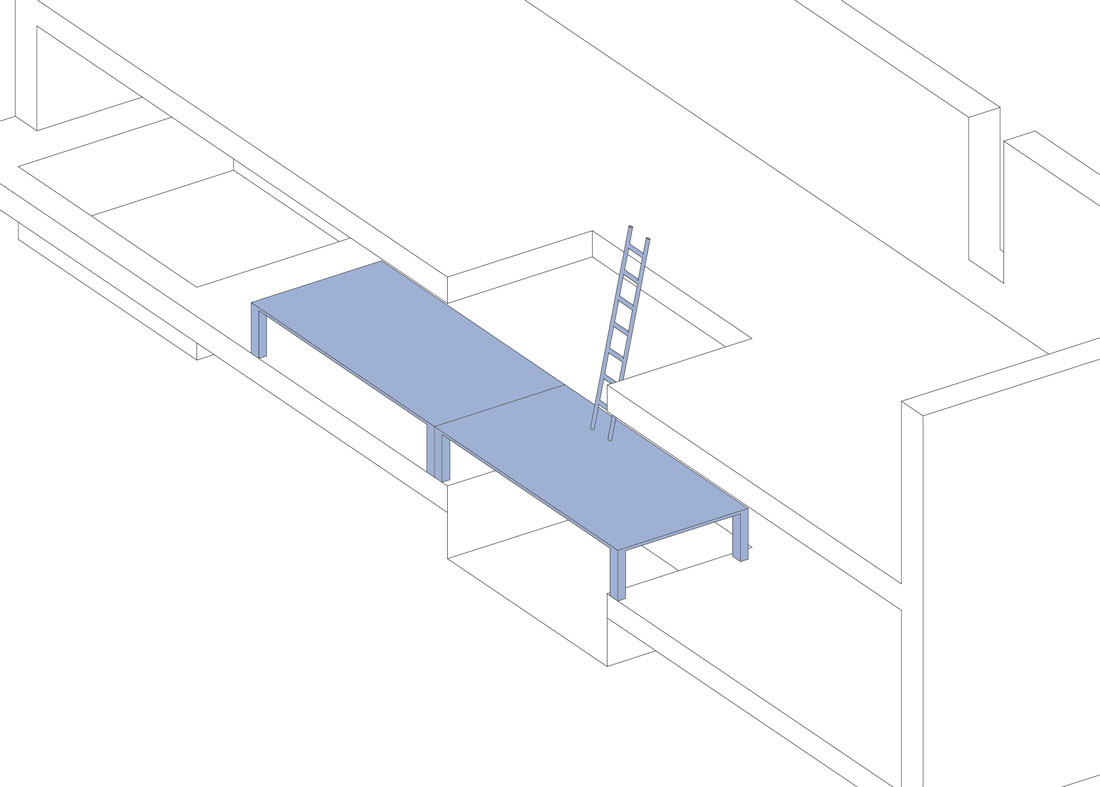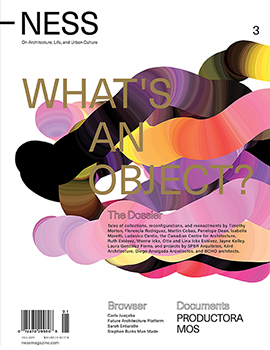table (ta•ble)
a piece of furniture consisting of a smooth flat slab fixed on legs
Mirriam-Webster Dictionary
There is no more ubiquitous piece of furniture in architectural culture than the table. Practically, tables perform as objects of convenience. Conventionally, they serve to establish scale for the plan and represent the function of the space: coffee table, dining table, drafting table, occasional table, offering table, operating table, side table, work table. Historically, they have inspired integrated-tables (floors and walls that absorb tables), macro-tables (buildings that look like tables), and micro-architectures (tables that look like buildings).[1] Occasionally, they disappear as one thing, and reappear as something else.
I can think of eight tables in three recent projects that exceed themselves in this last way: Hideyuki Nakayama’s 004 House (2006), Junya Ishigami’s Tables for a Restaurant (2008), and Go Hasegawa’s Sakuradai House (2006). Each table exhibits the characteristics of neutrality and minimal form. Each exaggerates a flat rectangular surface, adding a degree of excess or redundancy. And each goes beyond mere utilization and materialization to assert a super-cultural surprise. All at once, each becomes a thing that seems to name the table, just as it names something else.[2]
To write about such tables from the west is no easy task. From here, criticism usually entails stripping away noise to uncover the significance of something. However, these Japanese projects are already so succinct, so flatly present, that there is little left to subtract. As Roland Barthes writes in Empire of Signs, “there is nothing there to read.”[3] The labor of criticism here, then, is to add: to expound on how and why something does what it does. What follows is an attempt to elaborate an answer to a straightforward question: what is that other thing, that super thing, these tables do?
Long table in Hideyuki Nakayama’s 004 House in Matsumoto, Nagano, Japan
Axonometric section of the table in Hideyuki Nakayama’s 004 House in Matsumoto, Nagano, Japan
Full content is available only for registered users. Please login or





















